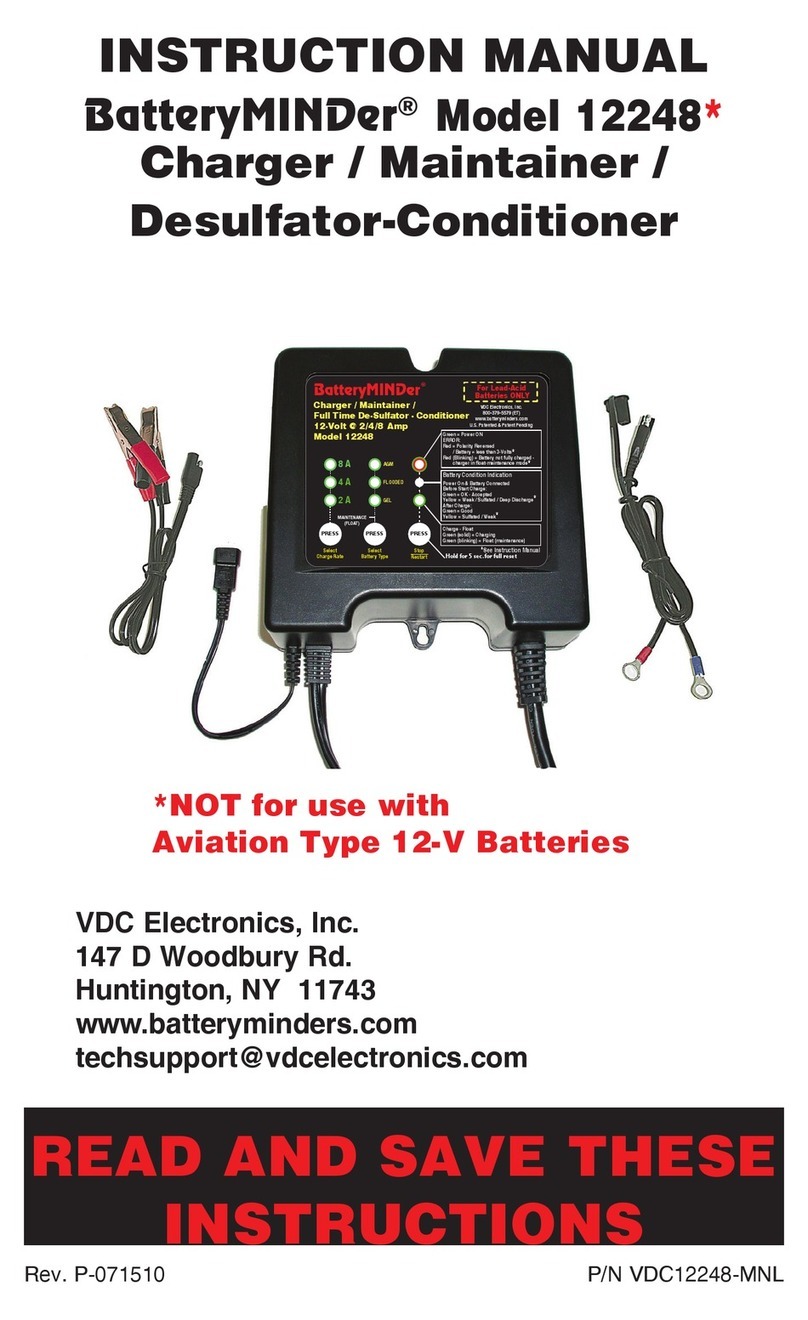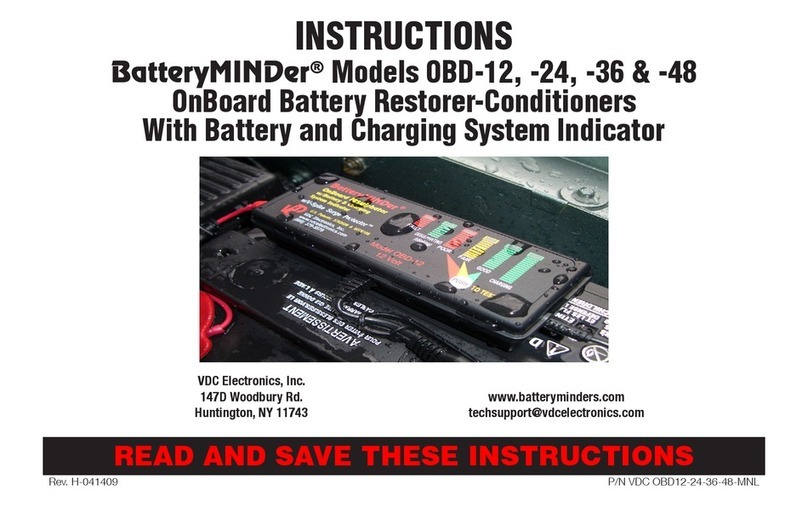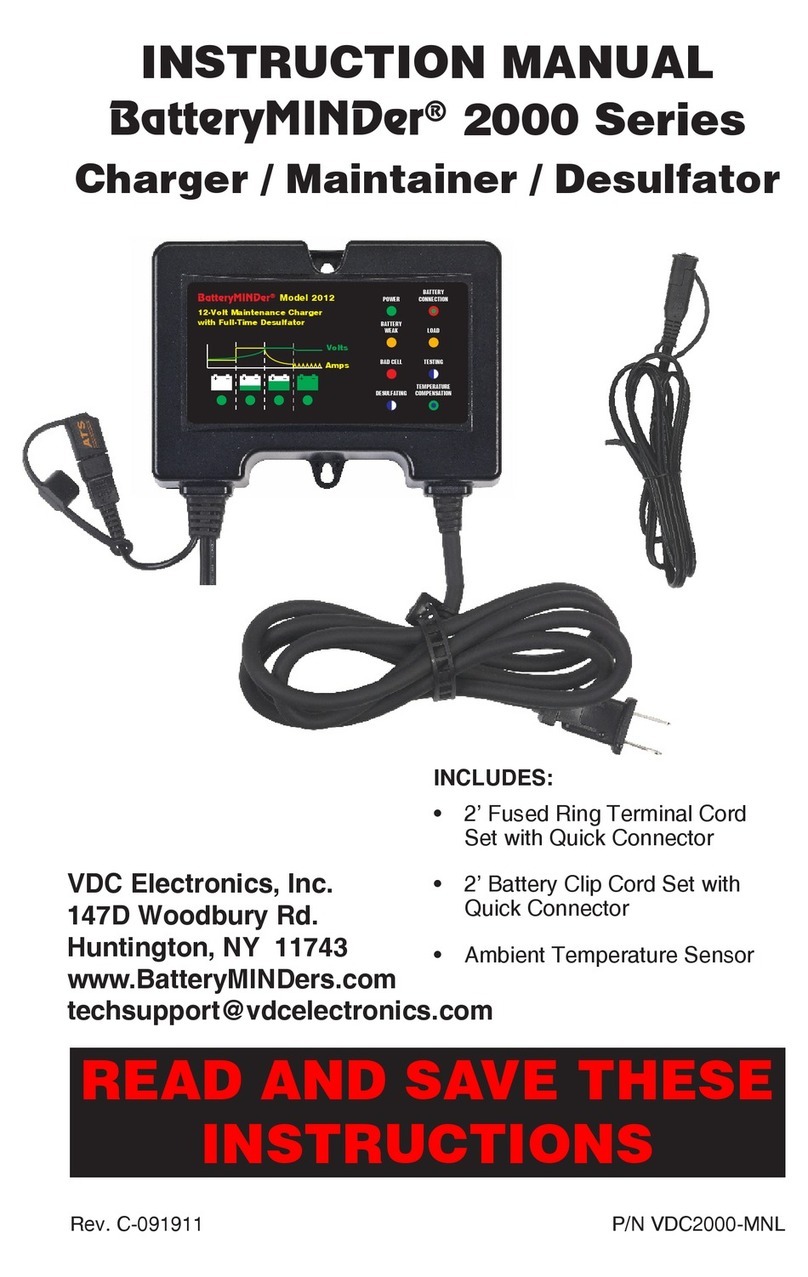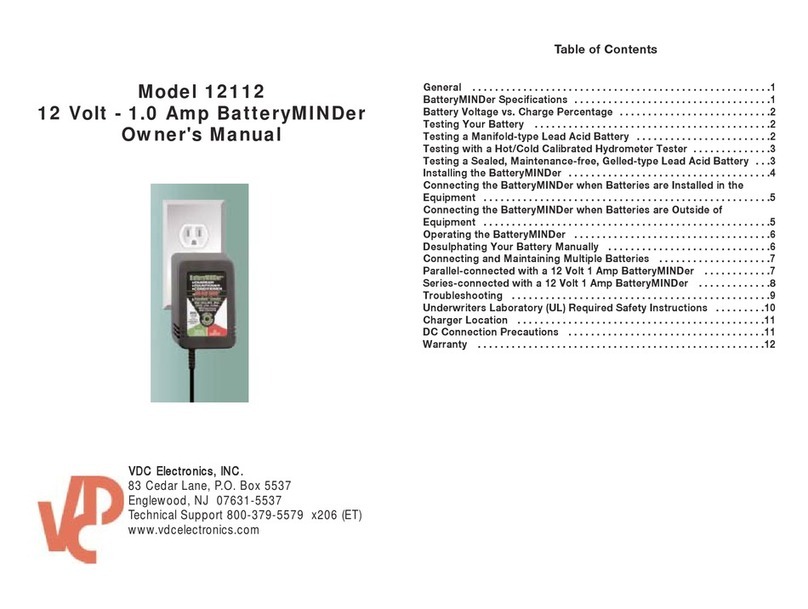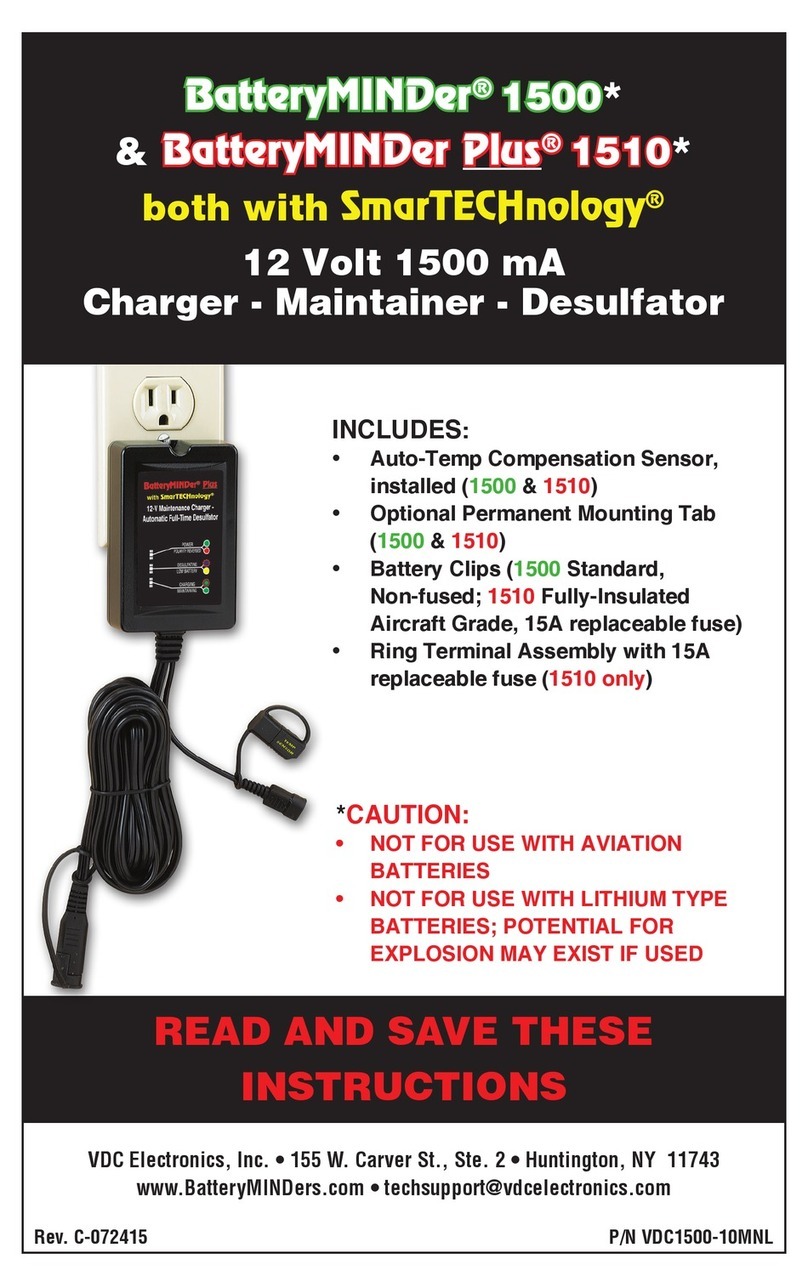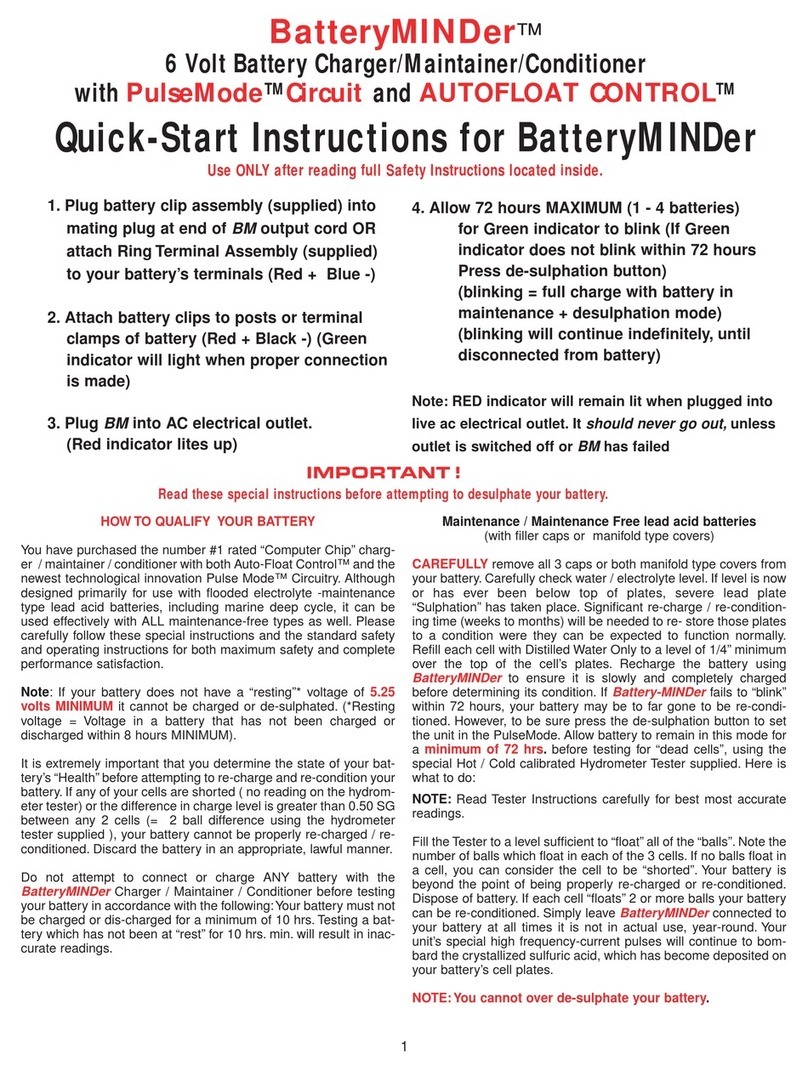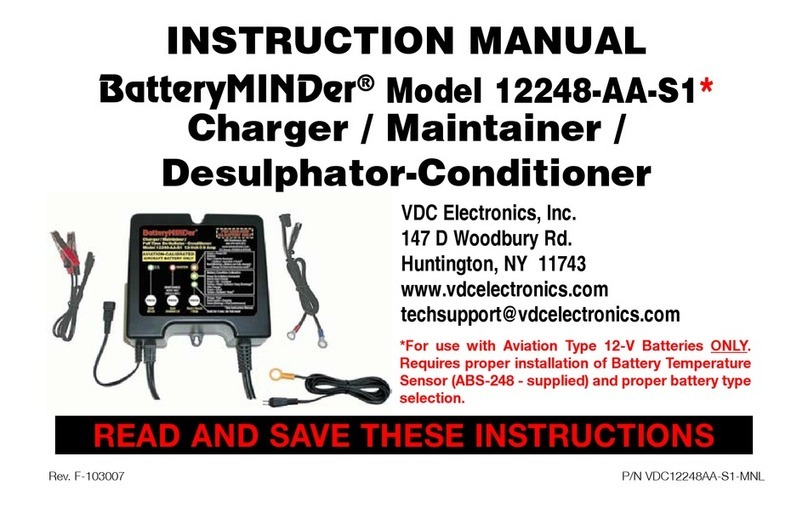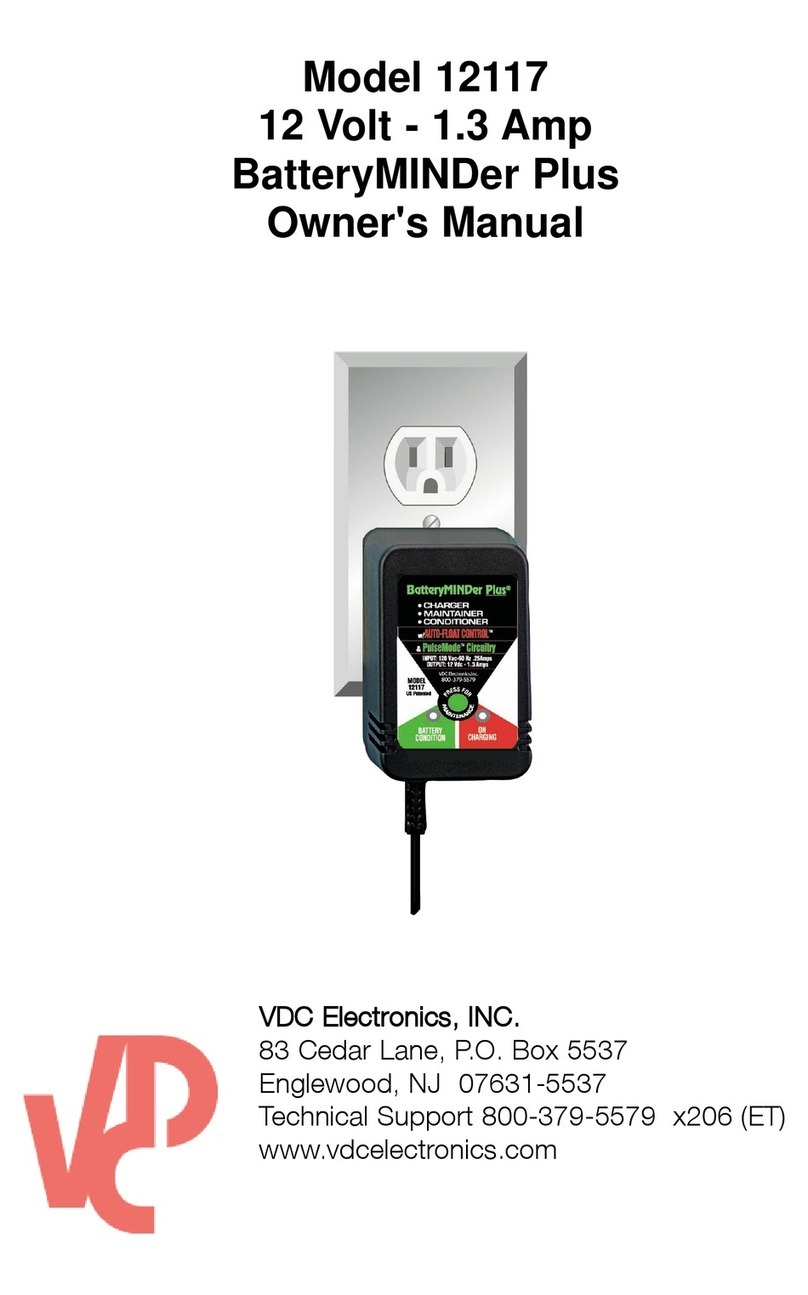
Underwriters Laboratories (UL)
REQUIRED SAFETY INSTRUCTIONS
WARNING
TO REDUCE THE RISK OF FIRE,
ELECTRIC SHOCK, OR INJURY TO
PERSON, OBSERVE THE FOLLOWING:
1. Do not expose charger to rain or snow. It is
designed to operate ONLY INDOORS.
2. USE of any attachment not specifically recom-
mended by the battery charger manufacturer for
use with this exact model of charger may result
in risk of fire & electric shock or injury to person.
3. An extension cord should not be used, unless
absolutely necessary. Use of an improper exten-
sion cord could result in fire or electric shock. If
extension cord must be used be sure:
a. Pins on plug of extension cord are the same
number, size, & shape of plug on charger
b. Extension cord is properly wired and in
good condition.
c. Wire size is enough for AC ampere of charger
as specified below: Length of cord, feet (meters)
25 (7.6), 60 (15.2), 100 (30.5), 150 (45.6) AWG
Size #18.
4. Do not use charger if it received a sharp blow,
been dropped, or damaged.
5. Charger contains no serviceable parts. If it
fails for any reason, return to the address shown
within for a free replacement under warranty.
6. To reduce risk of electric shock, unplug charg-
er from outlet before attempting any cleaning.
7. WARNING - RISK OF EXPLOSIVE
GASES.WHENEVER YOU WORK NEAR A
LEAD ACID BATTERY IT IS DANGEROUS.
BATTERIES GENERATE EXPLOSIVE GASES
DURING NORMAL BATTERY OPERATION.
FOR THIS REASON, IT IS OF UTMOST
IMPORTANCE THAT EACH TIME BEFORE
USING YOUR CHARGER, YOU MUST READ
THIS MANUAL AND FOLLOW THE INSTRUC-
TIONS EXACTLY.
Rev. G-061606 Page 3 P/N VDC12248-MNL-F
Con’t. on next page
